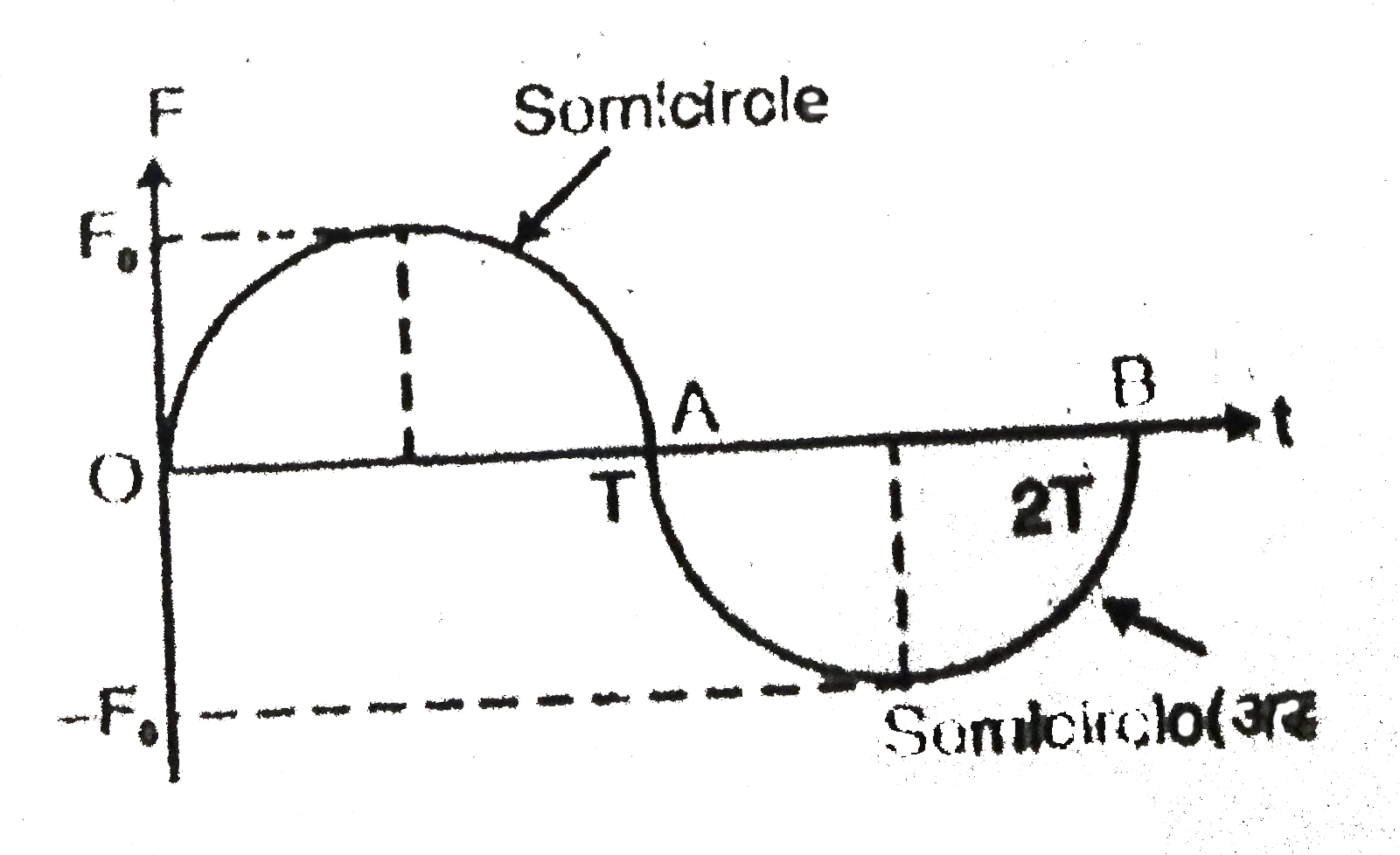A force of 10 N acts on a body of mass 2 kg for 3s , initially at rest. Calculate the velocity acquired by the body
To solve the problem step by step, we will follow the laws of motion and apply the relevant formulas.
1. Identify the Given Values:
- Force (F) = 10 N
- Mass (m) = 2 kg
- Time (t) = 3 s
- Initial velocity (u) = 0 m/s (since the body is initially at rest)
2. Calculate Acceleration (a):
According to Newton's second law of motion, the relationship between force, mass, and acceleration is given by:
F=m⋅a
Rearranging this formula to find acceleration gives:
a=Fm
Substituting the known values:
a=10N2kg=5m/s2
3. Use the First Equation of Motion to Find Final Velocity (v):
The first equation of motion states:
v=u+a⋅t
Substituting the values we have:
v=0+(5m/s2)⋅(3s)
v=15m/s
4. Conclusion:
The velocity acquired by the body after 3 seconds is:
v=15m/s
Final Answer:
The velocity acquired by the body is 15 m/s.
---
- Force (F) = 10 N
- Mass (m) = 2 kg
- Time (t) = 3 s
- Initial velocity (u) = 0 m/s (since the body is initially at rest)
According to Newton's second law of motion, the relationship between force, mass, and acceleration is given by:
F=m⋅a
Rearranging this formula to find acceleration gives:
a=Fm
Substituting the known values:
a=10N2kg=5m/s2
The first equation of motion states:
v=u+a⋅t
Substituting the values we have:
v=0+(5m/s2)⋅(3s)
v=15m/s
The velocity acquired by the body after 3 seconds is:
v=15m/s
The velocity acquired by the body is 15 m/s.
Topper's Solved these Questions
- LAWS OF MOTIONBOOK - ICSECHAPTER - LAWS OF MOTIONEXERCISE - TOPIC 3 (2 Marks Questions )
9 Videos
- LAWS OF MOTIONBOOK - ICSECHAPTER - LAWS OF MOTIONEXERCISE - TOPIC 3 (3 Marks Questions )
7 Videos
- LAWS OF MOTIONBOOK - ICSECHAPTER - LAWS OF MOTIONEXERCISE - TOPIC 2 (3 Marks Questions )
11 Videos
- ICSE ANNUAL EXAMINATION -2020BOOK - ICSECHAPTER - ICSE ANNUAL EXAMINATION -2020EXERCISE - SECTION-II
45 Videos
- LIGHTBOOK - ICSECHAPTER - LIGHTEXERCISE - TOPIC 2 Spherical Mirrors (4 Marks Questions )
9 Videos
Similar Questions
A force of 10 N acts on a body of mass 2 kg for 3s , initially at rest. Calculate change in momentum of the body.
View SolutionA uniform force of 4 N acts on a body of mass 10 kg for a distance of 2.0 m . The kinetic energy acquired by the body is
View SolutionA force of 10 N acts on a body of mass 5 kg. Find the acceleration produced.
View SolutionAt a place where the acceleration due to gravity is 10m sec−2 a force of 5 kg - wt acts on a body of mass 10 kg initially at rest. The velocity of the body after 4 second is
View SolutionA force of 15 N acts on a body of mass 2 kg. Calculate the acceleration produced.
View SolutionA force of 15 N acts on a body of mass 2 kg. Calculate the acceleration produced.
View SolutionA force acts for 0.1 s on a body of mass 1.2 kg initially at rest. The force then ceases to act and the body moves thorugh 2 m in the next 1.0 s . Find the magnitude of force.
View SolutionA force acts for 0.1 s on a body of mass 2.0 kg initially at rest. The force is then withdrawn and the body moves with a velocity of 2m s−1. Find the magnitude of the force.
View SolutionA force acts for 0.1 s on a body of mass 2 kg initially at rest. The force is then withdrawn and the body moves with a velocity of 2 m/s. Find the magnitude of force.
View SolutionA unidirectional force F varying with time t as shown in the figure acts for a short duration 2T on a particle which is initially at rest. Then the velocity acquired by the body is:

View Solution
